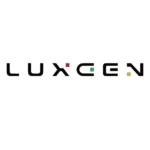At United Microelectronics Corporation’s (UMC) recent shareholder meeting, Chief Financial Officer Liu Chitung highlighted the company’s strategic focus on edge AI opportunities despite lacking production capacity for AI high-performance computing (HPC). Liu noted that the reordering effects from the US-China trade war are still unfolding, with customer demand requiring redevelopment projects that typically take over six months to materialize.
UMC approved a cash dividend of NT$3 per share and completed the reelection of its board of directors during the meeting. Post-meeting, Liu expressed optimism about market sentiment, indicating a stable climb from previous lows. He anticipated slight growth in the second quarter, with the overall demand in the latter half of the year expected to surpass that of the first half. While automotive and industrial semiconductors face short-term challenges, their medium- to long-term growth remains robust. Liu also forecasted improvements in the communications and consumer markets in the second half of the year.
Regarding new production capacity, UMC is focusing on its Nanke P6 plant, which is expected to operate at full capacity this year. The Singapore P3 plant, currently under construction, has reached the installation stage. However, due to varying customer demands, its mass production start has been postponed to 2026, with the P1 and P2 plants in Singapore providing interim support. The primary process at the P3 plant will focus on 22 to 28 nanometer technology.
Liu highlighted that UMC’s edge AI business can capture approximately 10% to 20% of the market opportunities, leveraging its technology, process, and production capabilities. The company will focus on HPC mid- and back-end applications, power management, and high-speed transmission. UMC’s interposer production capacity is centered in its Singapore plant, with a monthly capacity expected to double from 3,000 pieces at the end of 2023 to 6,000 pieces this year, reflecting an investment in response to market demand.
UMC’s strategic focus on edge AI and its expanding production capabilities underscore its commitment to addressing emerging market needs and fostering growth in a competitive semiconductor landscape.






